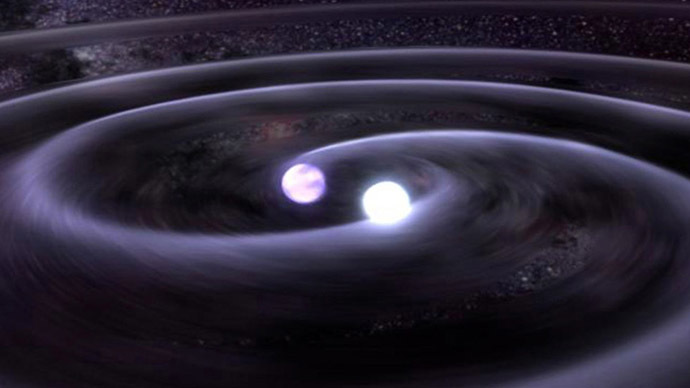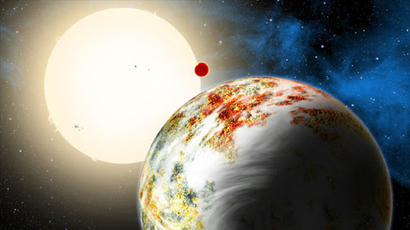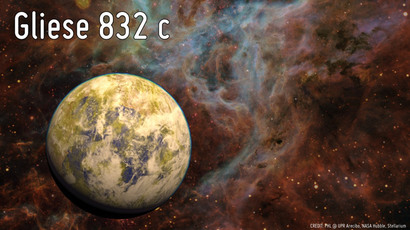New planet proves Earth-like worlds can form in two-star solar systems

A new planet has provided scientists with the first evidence that liveable, Earth-like worlds can exist in binary, or two-star, solar systems. As half the universe’s planets are in binary systems, the chances of life on other planets just got better.
The new planet, dubbed OGLE-2013-BLG-0341 by scientists, is twice the size of Earth and orbits one of the stars in a binary star system – where two stars orbit around their common center of mass – at a distance of around 90 million miles, which is the same distance between Earth and our sun. However, the big difference is that the heat source is 400 times dimmer than our own sun.
There is no chance that there could be any forms of life as we knew it on the planet, as the temperature on the new discovery is a chilly -213 Celsius, which is colder than Jupiter’s moon Europa. Even though there are two suns orbiting the planet, very little warmth is omitted from either heat source.
Too cold for life
However, although the new planet is too cold to be habitable, the same planet orbiting a Sun-like star in such a binary system would be in the so-called habitable zone.

This means there may be many more Earth-like planets out there, some possibly warmer and possibly harboring life. Getting to OGLE-2013-BLG-0341 maybe a problem, however, as it is located 3,000 light years away from our planet.
The research into the new planet was undertaken by four international teams, led by Professor Andrew Gould, of Ohio State University, with the findings published in the July issue of the journal Science.
Gould’s colleague Scott Gaudi, an astronomy professor at Ohio State, explained the significance of the find: "This greatly expands the potential locations to discover habitable planets in the future,” Gaudi said. "Half the stars in the galaxy are in binary systems. We had no idea if Earth-like planets in Earth-like orbits could even form in these systems."
Finding the planet
To find this Earth-like planet, astronomers used a technique called "gravitational microlensing," in which the gravity of a star focuses the light from a more distant star and magnifies it like a lens. To find planets using this method, astronomers look for a small dip within that magnified light signal.
Firstly, the scientists were able to see a brief dimming of light, as the planet’s gravity managed to disrupt one of the magnified images of the source star. However, the second effect showed that there was an overall distortion of the light signal that was emitted.
“Even if we hadn’t seen the initial signature of the planet, we could still have detected it from the distortion alone,” Gould said, pointing to a graph of the light signal. “The effect is not obvious. You can't see it by eye, but the signal is unmistakable in the computer modeling.”
Some scientists argue that the planet formation process would get too disrupted if a star has a tight stellar companion, and the further it is from the star, the more difficult it would be for planets to form. However, Gaudi disputes this theory, given the planet was able to form despite not having the advantage of strong sources of heat in its vicinity. “This discovery argues that yes, indeed, at least in this system of two red dwarfs, you can form planets at these sorts of longer distances," Gaudi said.
Jean-Philipe Beaulieu, at the Paris Institute of Astrophysics, France, has hailed the new planet as an important discovery. "This shows more than ever that our solar system is not the paradigm in our galaxy," he said.
















